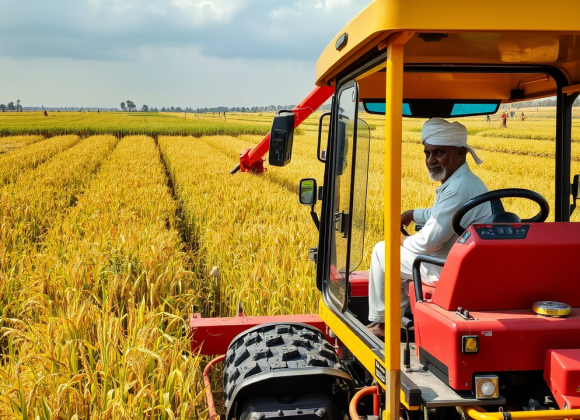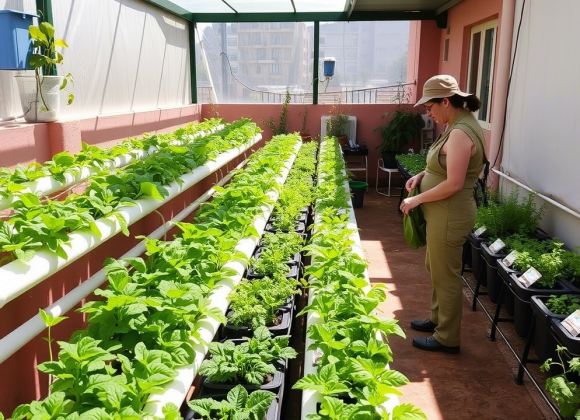Farming is the backbone of India—but many farmers face a tough journey filled with uncertainty, debt, and financial stress. To ease this burden and strengthen the agricultural sector, the government of India offers a range of subsidies. These provide crucial financial support, improve access to modern equipment, and help maintain price stability. But what are these subsidies exactly, how do they work, and why do they matter so much?
In this blog, we explore agricultural subsidies in India—what they include, the main types, how farmers can benefit, and where they can find help.
What Are Agricultural Subsidies?
Agricultural subsidies are financial assistance programs provided by the government to help farmers manage the costs of seeds, fertilizers, irrigation, machinery, electricity, crop insurance, and more. These subsidies are designed to:
- Make farming more affordable
- Improve productivity
- Encourage the adoption of modern agricultural techniques
- Protect farmers against market volatility and crop failure
Major Types of Government Subsidies for Farmers in India
1. Fertilizer Subsidy
Fertilizers play a critical role in boosting crop yield, but their market prices can be high. To ensure affordability, the government of India provides a fertilizer subsidy that covers the cost difference. Farmers get essential fertilizers like urea, DAP (diammonium phosphate), and MOP (muriate of potash) at subsidized rates, while the government directly reimburses fertilizer companies for the price gap.
🔗 Know more on Fertilizer Subsidies—Ministry of Chemicals and Fertilizers
2. Pradhan Mantri Kisan Samman Nidhi (PM-KISAN)
PM-KISAN is a direct income support scheme that offers financial relief to small and marginal farmers. Under this initiative, eligible farmers receive ₹6,000 per year, disbursed in three equal installments of ₹2,000 directly into their bank accounts. This timely assistance helps them cover essential expenses during different stages of the farming cycle.
🔗 Visit the official PM-KISAN Portal
3. Subsidies on Agricultural Equipment
Mechanization is key to modern farming, and the Sub-Mission on Agricultural Mechanization (SMAM) ensures farmers can access essential tools and machinery at affordable prices. Farmers can receive subsidies on equipment like tractors, power tillers, seed drills, sprayers, and more. These machines increase efficiency, save labor, and reduce time spent on critical tasks.
🔗 Learn more about SMAM—Ministry of Agriculture & Farmers Welfare
4. Irrigation Subsidy—PM Krishi Sinchayee Yojana (PMKSY)
Water is one of the most precious resources in agriculture. To promote efficient water use, the PM Krishi Sinchayee Yojana (PMKSY) provides subsidies for micro-irrigation systems, including drip and sprinkler irrigation. The scheme aligns with the motto “Per Drop More Crop,” helping farmers conserve water while increasing productivity.
🔗 Explore PMKSY on the official website
5. Crop Insurance—Pradhan Mantri Fasal Bima Yojana (PMFBY)
Agriculture is inherently risky due to unpredictable weather and pests. PMFBY is a crop insurance scheme that offers protection against losses from droughts, floods, pest attacks, and other natural calamities. Farmers pay a nominal premium, and the government covers the rest. In case of crop failure, claims are directly transferred to farmers’ bank accounts.
6. Electricity Subsidy
Access to electricity is crucial for irrigation and post-harvest processes. Many state governments provide free or heavily subsidized electricity to farmers for operating water pumps, irrigation systems, and agricultural machinery. States like Punjab, Haryana, and Andhra Pradesh lead in offering generous electricity subsidies to support their agricultural communities.
7. Seed Subsidies
Good-quality seeds are the foundation of a healthy harvest. Under various central and state schemes, the government offers certified high-yielding seeds at subsidized rates. These seeds are disease-resistant, have better germination rates, and significantly improve crop productivity, reducing the risk of crop failure.
8. Minimum Support Price (MSP)
The MSP system acts as a price safety net rather than a direct subsidy. It ensures that farmers get a fair and consistent price for key crops such as wheat, rice, pulses, and oilseeds, even if market rates fall. The government procures these crops at MSP through agencies like the Food Corporation of India (FCI), thereby supporting farmer income and food security.
🔗 View latest MSP updates—Commission for Agricultural Costs and Prices (CACP)
How Much Does the Government Spend on Farm Subsidies?
India spends a significant portion of its budget on agricultural support. In 2023–24, around ₹4 lakh crore (approx. $48 billion) was allocated for subsidies in agriculture and allied sectors, covering fertilizer subsidies, PM-KISAN, crop insurance, irrigation, and more.
For an analytical look:
🔗 Read NITI Aayog’s policy paper on Agricultural Subsidies
Who Can Avail These Subsidies?
While eligibility varies from scheme to scheme, most subsidies are open to
- Small and marginal farmers
- Women farmers
- SC/ST and other backward category farmers
- Tenants and sharecroppers (for select schemes)
Applicants usually need an Aadhaar number, land ownership documents, and a valid bank account linked to their mobile number.
How Can Farmers Apply?
Farmers can apply through:
- State Agricultural Departments
- Common Service Centres (CSCs)
- Krishi Vigyan Kendras (KVKs)
- Online portals like PM-KISAN, PMFBY, and Agri Machinery
Bonus Resource: Use the Kisan Suvidha App for weather updates, market prices, and scheme info.
Why Are These Subsidies So Important?
Agricultural subsidies in India are more than financial aid—they’re vital investments in rural livelihoods, food security, and modern farming. As farmers face challenges like climate change and rising costs, these programs reduce expenses, protect harvests, and boost income. To make a real impact, better implementation and awareness are crucial so every farmer—from Himachal to Tamil Nadu—can benefit. Understanding these subsidies is key to advancing India’s Green Revolution 2.0.




